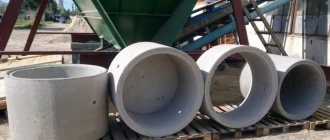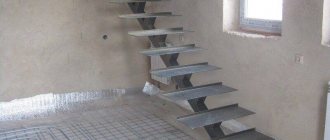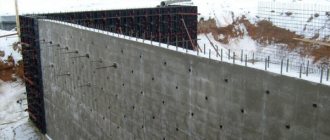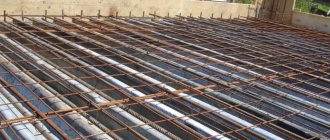- home
- Articles
- Prefabricated or monolithic reinforced concrete structures: which is better?
Every day the world produces approximately 2 billion cubic meters. m reinforced concrete structures - the construction of office, residential and industrial buildings is impossible without them. The use of reinforced concrete products allows projects of any degree of complexity to be put into operation quickly and with minimal financial investment.
The development of construction chemistry has shifted the emphasis. Block construction from prefabricated reinforced concrete is gradually losing ground, sometimes unable to withstand competition with monolithic reinforced concrete technology.
Precast concrete technology
The element is manufactured at a specialized plant, delivered to the site, where it is installed in the design position.
Advantages
- low labor and time costs on the construction site;
- short construction time;
- the possibility of finishing the front surface of an element (tile, texture) in the factory, which eliminates subsequent finishing processes on site;
- low dependence on weather conditions;
- quick commissioning of the structure (no time is required for the concrete to gain strength).
Flaws
- high cost (70-100% more expensive than monolithic);
- the presence of seams and joints (additional costs for sealing);
- the need to use heavy lifting mechanisms during construction;
- restrictions on the size and weight of structures;
- poor performance of structures under dynamic loads. Application area:
- with short construction periods;
- with a large number of similar elements;
- with a small mass of elements (up to 6.0… 10.0 t);
- in the event that a technical and economic comparison of options has proven the effectiveness of using prefabricated structures in specific construction conditions.
Features of prefabricated monolithic flooring
To understand what SMP is, just study the following picture.
As can be seen from the photo above, a prefabricated monolithic floor consists of factory-made beams with a triangular reinforcement frame (so-called trigons), mounted on a concrete base. Aerated concrete blocks are laid between the beams, which act as permanent formwork.
A reinforcing mesh is also laid on top of the blocks, always with a gap, or a frame is knitted with a cell of 10x10, 15x15 cm, from “eight” or “tens” reinforcement.
The beams are supported from below with wooden supports or telescopic posts, and then concrete is poured.
After the concrete has gained strength, the racks are removed and further construction and finishing work is carried out.
It seems that this technology is inferior to the standard and familiar one, when reinforced concrete floor slabs are quickly laid on the walls by crane. And in terms of the degree of manufacturability, i.e. number of preparatory operations, similar to conventional pouring of a monolithic floor. The question arises: what are the advantages of the NSR then? To answer this, you need to consider the key features of slab and monolithic floors.
Let's take an example of a house made of aerated concrete. To mount concrete floor slabs on such a “box”, it is necessary to pour an armored belt around the perimeter of the walls, which will evenly redistribute the load from the slabs to the blocks.
Next, the rustications of the floor slabs are sealed, if necessary, the slabs are anchored, and a leveling screed is poured on top of them, under the final coating, about 5 cm thick.
This technology has been well developed for a long time and usually does not cause difficulties for builders. But it is difficult or impossible to cover long unsupported spans of 8, 9, 12 or more meters with slabs. In addition, the geometry of modern country houses is far from a simple square or rectangle, and the standard length of ordinary floor slabs is 6 m. That is, if the house has bay windows, ledges, curved sections, or the “box” has a complex configuration, then you will have to either cut slabs, or puzzle over how to combine floor slabs with monolithic areas.
Under the flight of stairs.
This leads to increased cost and complexity of construction work.
To install the slabs, you need good access roads and the possibility of unhindered operation of the crane that will lay them. This is not possible in all suburban areas.
Now let's go over the monolithic floor. For its installation, in the same aerated concrete house, there is no need to fill a separate armored belt, because The monolithic floor itself is a rigidity disk that redistributes the load. But for a monolith, it is necessary to install formwork over the entire area of the covered room from corrugated sheets or laminated plywood and install supports. High-quality connection of the spatial reinforcement frame.
Making a monolithic floor on long spans, over 7 meters, is not always cost-effective, because it will turn out very heavy, and will actually “eat” itself.
To all of the above, we add that if it is necessary to reconstruct a stone house, if the customer wants to replace old and rotten wooden floors, the option with slabs immediately disappears, and the mass of the monolith may simply not be able to withstand the foundation and soil foundation.
Let's move on to the prefabricated monolithic floor. As mentioned above, the basis of this floor is beams. The base, the “core” of the beams in which the reinforcement frame is installed, can be made of concrete.
Weight 1 linear m of such a beam is about 17 kg.
victorborisov FORUMHOUSE user
I built a one-story house from aerated concrete with a flat roof. The ceiling is prefabricated and monolithic. During its installation, a problem arose about how to raise the beams with a concrete base. If a beam with a length of 3500 mm and a weight of 60 kg can be thrown by two people onto a wall 3 m high, then with beams with a length of 6500 mm and a weight of 110 kg this will no longer work. We need helpers, or better yet, a crane, which will have to be rented.
To install SMP based on concrete beams, special T-shaped blocks are required, i.e. blocks with a chamfer at the bottom.
This version of beams is already outdated, and some manufacturers offer lighter beams based on a galvanized steel profile on which the reinforcing cage is mounted.
Weight 1 linear m of such a beam is approximately 6 kg.
Those. Such a beam can be lifted and mounted manually, without the use of lifting equipment.
The final weight of such a beam is also affected by the number of rods of additional longitudinal reinforcement. Its diameter and number of rods are selected based on the design calculation of the load-bearing capacity of the prefabricated monolithic floor.
Another advantage of SMP is the ability to flexibly select the load-bearing capacity of the floor depending on the expected operational loads.
The filler (fixed formwork) between metal beams can be ordinary, relatively light ordinary ones, and not special T-shaped, aerated concrete, polystyrene concrete, expanded clay concrete blocks, as well as blocks made of warm ceramics.
You can reduce the weight of a prefabricated monolithic floor even more by using liners made of dense foam.
The question arises about the fire hazard of this covering option, but in Europe such filler is often found even in the construction of multi-storey buildings.
Note that SMP with aerated concrete liners, according to test results, have a high degree of fire resistance.
A prefabricated monolithic floor has less weight than a monolithic one. This, in turn, reduces the load on the walls, foundation and soil. Therefore, SMP can be used when renovating buildings and replacing old and weakened floors in residential buildings.
With an equal floor thickness of 25 cm, the weight of the monolith is approximately 500 kg/sq. m, and for SMP - 300 kg/sq. m.
Beams can be of different lengths, they can be joined at an angle, which makes it possible to cover rooms with complex configurations.
Let us add that SPM has a high load-bearing capacity. By increasing the height of the beam section and using additional longitudinal reinforcement, it becomes possible to span unsupported spans up to 16 meters long.
Industrially manufactured triangular frames have heights of 10, 15, 20, 25 and 30 cm.
Another advantage of a prefabricated monolithic floor is that there is no need to install an armored belt, because it is poured simultaneously with the ceiling, which also simplifies and reduces the cost of work. You can immediately embed heated floor pipes into the ceiling.
By stretching the concrete along pre-installed “beacons”, you will immediately obtain a flat surface, ready for laying the finished floor covering.
Monolithic reinforced concrete technology
The element is manufactured on site in the design position. Materials are delivered to the construction site according to schedule.
Advantages
- low cost;
- absence of seams and joints (monolithic construction);
- the ability to give the structure any shape, as well as erect elements of any size and weight;
- good performance of monolithic structures under dynamic and alternating loads.
Flaws
- high labor and time costs on the construction site;
- presence of “wet” processes;
- long terms for putting the structure into operation (time is required for the concrete to gain strength).
Application area:
- for large massive structures (large foundations, foundation slabs, massive columns, etc.);
- during the construction of structures of complex shape (curvilinear, variable cross-section, etc.);
- under large dynamic loads (foundations for technological equipment, pavement of airfield landing strips);
- in cases where a technical and economic comparison of options has proven the effectiveness of using monolithic structures in specific construction conditions.
The rational choice of one or another technological scheme for the construction of a reinforced concrete structure is determined by:
- type of structure being built, its parameters (dimensions, weight, shape, purpose);
- remoteness of the construction site from reinforced concrete plants;
- technical capabilities of the performer (necessary equipment, personnel);
- climatic conditions (at negative temperatures, the costs of heating monolithic structures are high);
- given restrictions (in terms of time or cost).
What should the overlap be like?
● Strong enough to withstand its own weight and loads - both evenly distributed and point ones. According to standards*, floors in residential buildings must withstand a distributed load of at least 150 kg/m2 (taking into account the snow load, for example, for the Moscow region, we are talking about 210 kg/m2).
● Rigid: able to resist deflection under loads. In the case of interfloor ceilings, the deflection should not exceed 1/250 of the span.
● Stable, not shaky. There should be no hesitation when people walk on the floor or move furniture. They will not exist if the dead weight of the ceiling is at least 150 kg/m2.
● Prevents the spread of airborne noise.
● Heat-insulating, when the ceiling separates a warm room from a cold basement or attic.
● Fire resistant in accordance with fire safety requirements.
Design features
As already mentioned, the beam consists of a galvanized profile (shelf), 120 x 40 mm, to which a triangular reinforcement frame is welded. The upper longitudinal reinforcement is made from a rod with a diameter of 8 mm, and the lower reinforcement is made from two rods with a diameter of 12 mm. But there is a nuance. When it is necessary to perform a long unsupported span, the beam is strengthened with additional reinforcement. At the bottom of the frame, a third longitudinal reinforcement with a design diameter is provided, for example, 25 mm for a beam 9 m long. The upper and lower reinforcement are combined into a single structure with transverse diagonal reinforcement with a diameter of 5 mm.
To fill the floor, you can use aerated concrete blocks of any density grade - D400, D500. Moreover, the density of aerated concrete has little effect on the load-bearing capacity of the floor, because the blocks act as permanent formwork, and the reinforced concrete slab is responsible for carrying the load.
The standard size of the blocks used is 625 x 200 x 250 mm. The block at each end must rest on a galvanized profile by at least 40 mm. Based on this, the pitch between the beams should be 725 mm.
The question may arise: is the structure safe, where the blocks are sandwiched between the beams? Won't they fall out? Of course not. Such floors were actively used back in Soviet times, and then the blocks were simply clamped between the beams. But due to concreting, they were connected into a monolithic whole, and there were no problems with the floors. Modern beams have shelves to hold the blocks, so the reliability of the structure is even higher.
Please note: despite being filled with aerated concrete - a material with good heat-insulating properties - prefabricated monolithic floors must be insulated if they separate warm rooms from the street.
Monolithic reinforced concrete structures
Monolithic reinforced concrete structure is a technology in which the elements of a building or structure are manufactured directly on the construction site using formwork, installing reinforcement cages and layer-by-layer laying of concrete. After the concrete has gained sufficient strength, the formwork is removed.
Examples of monolithic reinforced concrete structures:
- monolithic foundations - the structure is built on dangerous soils and avoids changes in the geometry of the foundation due to subsidence or swelling of the soil;
- dams are hydraulic structures made of monolithic reinforced concrete that can withstand enormous water pressure and destructive hydrological influences - impacts - without loss of strength. Monolithic reinforced concrete dams, as an important component of hydroelectric power plants, serve for many years, providing electricity to entire cities;
- load-bearing walls are a monolithic reinforced concrete frame, which additionally serves as a heat-insulating and enclosing structure. In terms of strength and thermal insulation qualities, a reinforced concrete wall 12 cm thick is equivalent to 25 cm brickwork, 40 cm aerated concrete and 63 cm foam concrete;
- monolithic airfield and road surfaces - effectively absorb significant dynamic loads, perfectly resist the abrasive effects of car wheels and aircraft landing gear, and have excellent grip characteristics.
And this is not a complete list of structures built from monolithic reinforced concrete structures. A large number of unique construction projects are made from monolithic reinforced concrete: industrial pipes, metro overpasses and tunnels, television towers, nuclear reactors of nuclear power plants and many other structures.
Monolithic concrete wall
Monolithic concrete walls have a high level of compressive strength. In particular, the strength of a monolithic concrete wall with a thickness of 120 mm corresponds to the strength of the following structures:
- Brickwork 25 cm thick.
- Wall made of foam concrete blocks 65 cm thick.
- Wall made of aerated concrete blocks 40 cm thick.
This makes it possible to significantly save on basic materials. At the same time, the practice of constructing monolithic low-rise buildings recommends adhering to the following standards: monolithic walls of one or two-story buildings must have a concrete thickness of at least 20 cm, walls of buildings with a height of more than 2 floors must be built with a thickness of 55 centimeters or more.
How to make a monolithic house frame?
How to build a monolithic frame of a private house with your own hands
- Level the soil, fill the pit with a cushion of sand and gravel.
- Thoroughly compact the bedding and install the foundation panel formwork.
- Pour the concrete foundation of the building in the form of a monolithic slab or strip foundation, reinforced with steel reinforcement.
26 Jun
2022 Interesting materials:
When is City Day in Kaliningrad this year? When is Mother's Day in the twentieth year? When is Matrona Memorial Day in 2022? When is Chef's Day in 1920? When is Welder Day in 2022 in Ukraine? When is Sons Day in 2022 in Russia? When is Airborne Forces Day in 1920? When is grandchild day 2022? When is certificate 2 personal income tax for 2022 generated? When is the year of the cat and the hare?
Flexible reinforced concrete elements in construction:
- reinforced concrete beams and
- reinforced concrete slabs,
Slabs differ from beams in their larger width and smaller cross-sectional height.
Flexible reinforced concrete elements are often made of T-shaped (T-shaped) and U-shaped (ribbed) sections. The meaning of such structural forms is to remove as much of the concrete from the tension zone as possible (not taken into account when calculating the strength), leaving only the part necessary to place the longitudinal and transverse working reinforcement and connect it with the compressed zone. This reduces the consumption of concrete and the cost of elements and achieves a very large weight reduction (5 times or more).
Scheme of operation of concrete blocks during bending
The high strength of steel reinforcement makes it advisable to use reinforced concrete also in compressed elements - columns, since the presence of reinforcement in them makes it possible to slightly reduce their transverse dimensions (compared to concrete) and increase their reliability under random eccentricities of longitudinal forces and lateral loads. The longitudinal reinforcement bars of the columns are connected (also by welding) to transverse bars to avoid loss of stability due to compression work.
Previously, concrete grades 100–200 were mainly used in reinforced concrete; nowadays grades 400–500 are becoming common (for prefabricated reinforced concrete). For some types of reinforced concrete structures, for example columns that work mainly in compression, it is advisable to increase the concrete grade to 900. At the same time, the increase in concrete grades is currently limited mainly by the insufficiently high qualities of the aggregates.
By varying the grade of concrete and the amount of reinforcement in a reinforced concrete element (while maintaining its shape and dimensions), its strength can be quite widely modified. This makes it possible to produce elements of different load-bearing capacities in the same form.
Important properties of reinforced concrete are its fire resistance and corrosion resistance, due to the fact that steel reinforcement bars are covered in reinforced concrete with a protective layer of concrete.
Heat-resistant reinforced concrete differs from ordinary reinforced concrete in the special properties of the materials: heat-resistant concrete is used, the reinforcement is only made of hot-rolled steel, since cold-drawn wire loses hardening when heated and, as a result, loses its strength.
Advantages
Advantages inherent in monolithic reinforced concrete:
- fire resistance;
- there is no need to use auxiliary equipment or cranes;
- possibility of self-production;
- has identical production technology for different cycles;
- does not require a large amount of labor;
- ability to resist corrosion and oxidation;
- high load resistance;
- speed of construction;
- seismic stability of buildings and structures;
- has a long service life;
- does not require large quantities in construction equipment;
- after many years it increases its strength characteristics;
- has a relatively low construction cost;
- Another advantage of the design is the possibility of using various forms of building elements.
Return to contents
Resistance to mechanical loads
Due to the small number of connecting seams in a monolithic structure, sufficient resistance to mechanical loads is formed. The use of monolithic reinforced concrete increases the strength of the walls and foundations of the structure by combining a solution of cement, sand, water and internal reinforcement.
Oxidation resistance
Monolithic reinforced concrete structure has a long service life due to the concrete protective layer that covers the reinforcing mesh. Also, the durability of concrete with iron reinforcement is ensured by the chemical action of the cement mortar. The process of chemical action is due to the hydrolytic separation of lime at the moment of hardening of the concrete solution, which gives a strong alkaline reaction. The resulting alkaline reaction can protect the steel from oxidation.
Does not corrode
Corrosion is the spontaneous destruction of a metal under the influence of physicochemical or chemical interactions with the external environment. Corrosion of concrete with iron reinforcement occurs due to the destruction of hardened cement and entails a decrease in strength characteristics. Metal rust is accompanied by a decrease in water permeability and a deterioration in the adhesion of concrete to the reinforcing mesh.
Resistance to corrosion on structures and reinforced concrete elements is ensured through the use of a special type of cement. It is possible to prevent the occurrence of corrosion by treating the concrete coating with special liquids or coating it with a waterproofing material.
Self-sealing
Due to the special chemical composition, reinforced concrete not only retains its strength characteristics when exposed to moisture, but also exaggerates them. Technical characteristics allow reinforced concrete to self-compact over time.
Features of concrete products
The use of reinforced concrete structures today is relevant in all areas of construction Source 1beton.info
The word “reinforced concrete” today has become a common noun, and when it is pronounced, it does not always mean a building material, but this certainly implies a definition of some kind of strength and inviolability. And in fact, if we take into account the qualities that monolithic and prefabricated reinforced concrete structures have, such a comparison is not without meaning.
Concrete reinforcement
Reinforcement of concrete allows you to strengthen its structure and make it more resistant to heavy loads Source vseoarmature.ru
The creation of any structures made of reinforced concrete involves reinforcement with steel rods of one or another section, which is already mentioned in the definition of the building material itself. For this purpose, steel wire with a cross-section of 6 mm is used, but this is most often used as an auxiliary element for the overall frame. Basically, reinforcement of monolithic, prefabricated and monolithic-prefabricated structures is made with steel rods with a diameter of 10 to 16 mm. In this case, different reinforcement is used, that is, it can be either smooth or corrugated (AIII).
For monolithic and prefabricated structures, reinforcing frames are connected using binding wire Source dom-s-ymom.org
Concept of reinforced concrete
Concrete has good compressive strength, which cannot be said about tensile strength. It is because of this that concrete structures without reinforcement are very rarely used. To increase tensile strength, metal wire or reinforcing bars are placed in concrete when laying the foundation. From this we can conclude that reinforced concrete is a combination of concrete and steel reinforcement. The result is an ideal design, durable and reliable.
In the middle of the 19th century, reinforced concrete structures began to be patented. And after more than 150 years, we can say that this material has undergone significant changes. And his process of change is still moving.










